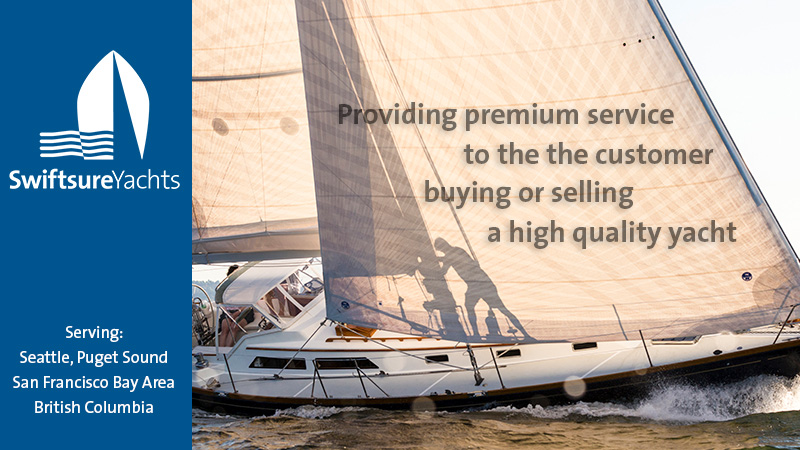
Just In: Person Dies After Boat Collision Near Angel Island
A person has died after a sailboat and a powerboat collided near Angel Island on Thursday. CBS Bay Area reported that the collision between a sailboat with four people aboard and a 25-ft powered center-console vessel with one person aboard was reported to the USCG at around 2:09 p.m. Thursday.
“The person on the center-console vessel fell into water and was rescued by people on sailing vessel,” CBS wrote. “Authorities said the victim was unresponsive. A Golden Gate Coast Guard crew took control, bringing the individual to emergency responders in Tiburon for medical treatment.
“San Francisco police later confirmed that in spite of life saving efforts by bystanders and medical personnel, the victim succumbed to their injuries at the scene.”
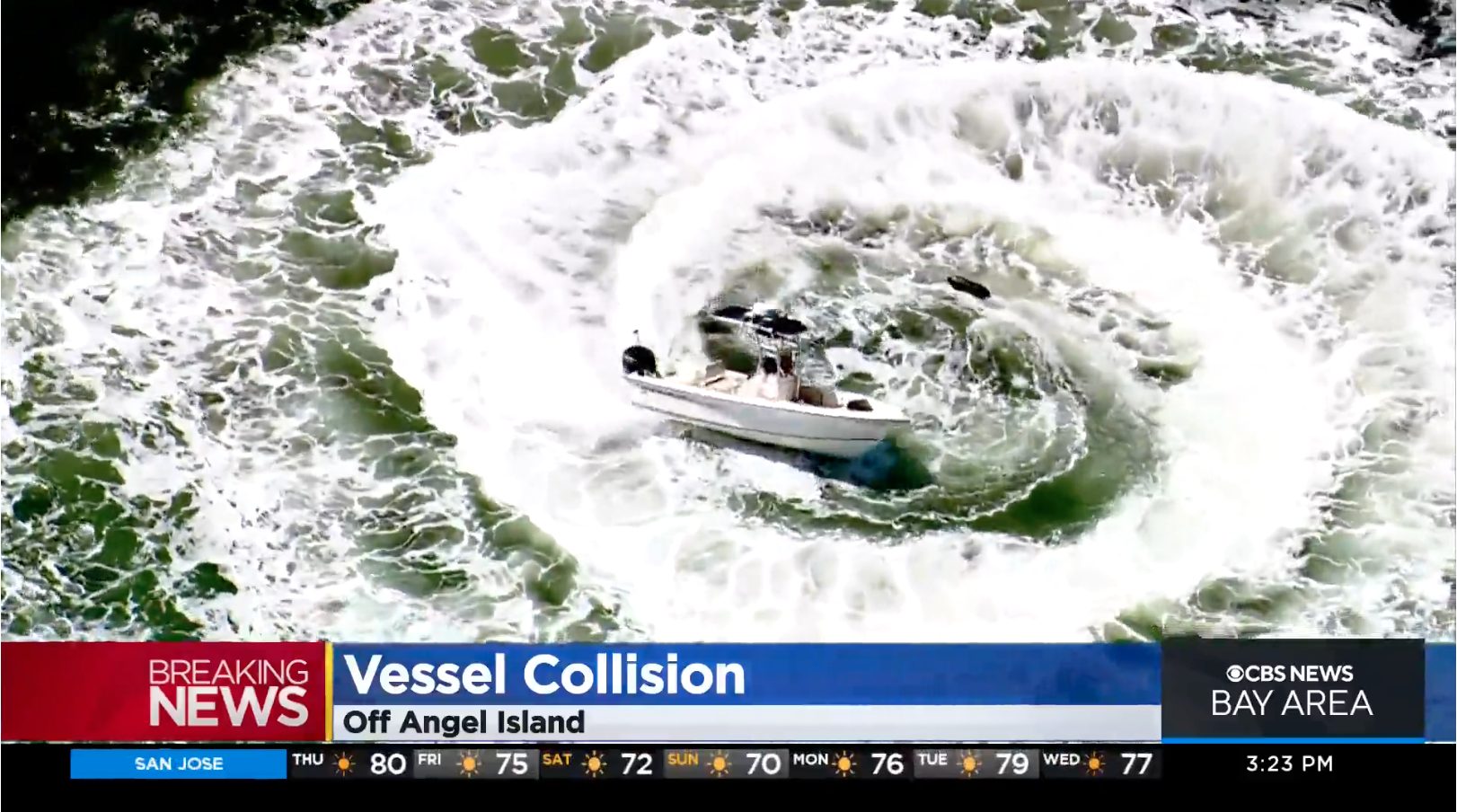
At this stage the accident is under investigation and no further information has been released. We’ll try to bring you further details in Wednesday’s ‘Lectronic Latitude.
Latitude 38 July Issue Out Today
Summer is here, and with it, the latest issue of Latitude 38. In this month’s magazine we preview the Pacific Cup, cover the Master Mariners Regatta, and share photos and stories of other sailors from near and far. Here’s a preview.
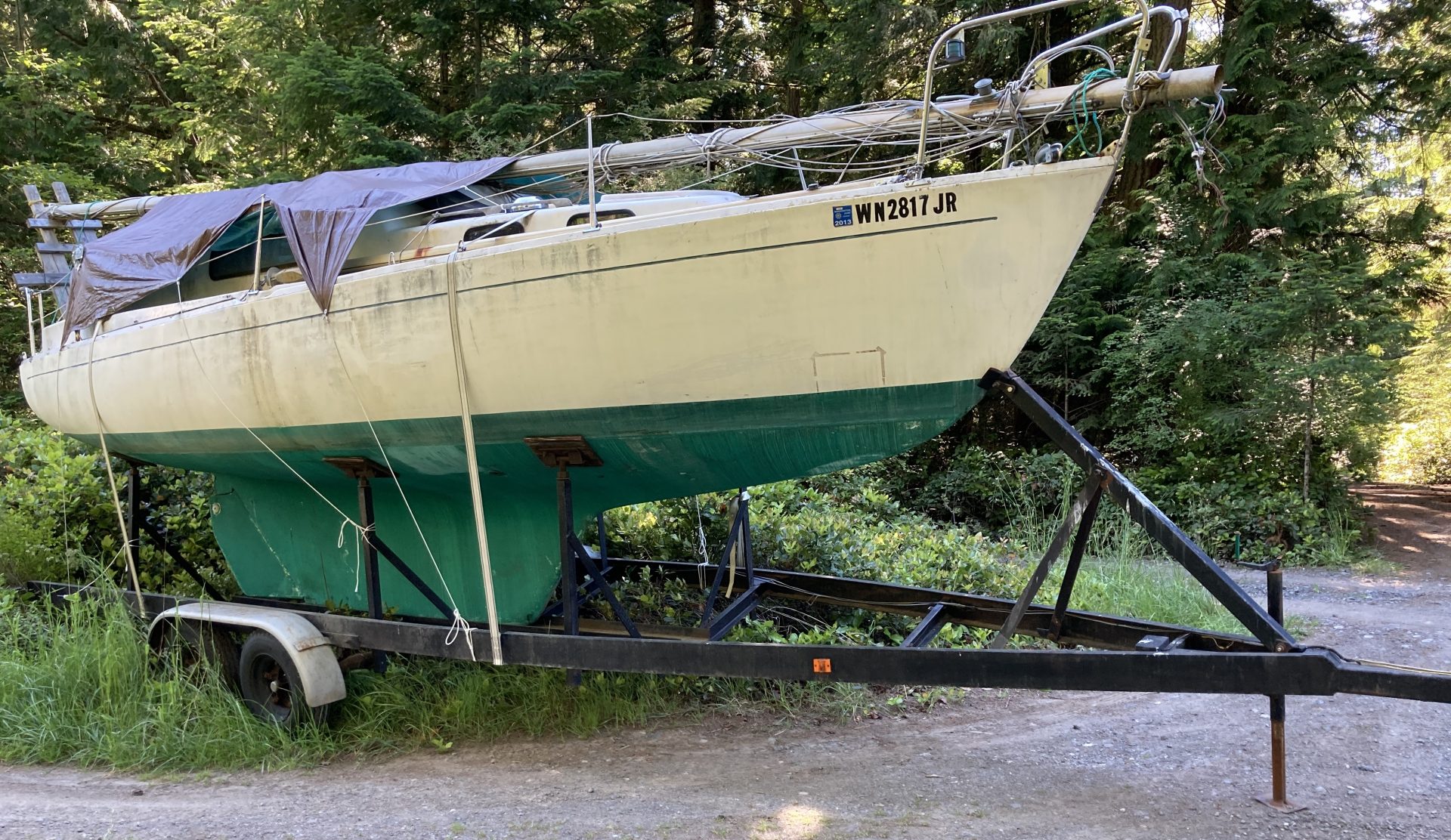
We found her sitting on a trailer, knee-deep in weeds, in a gravel pit on Lopez Island. Having responded to a Craigslist ad for a sailboat trailer we needed for a recently completed sailing dinghy, we found one that would work, the only condition being we had to take the boat that occupied it. When we saw that the boat was, in fact, the famed Albin Vega 27 Mahina, we agreed it was a condition we could live with and towed her home that day.
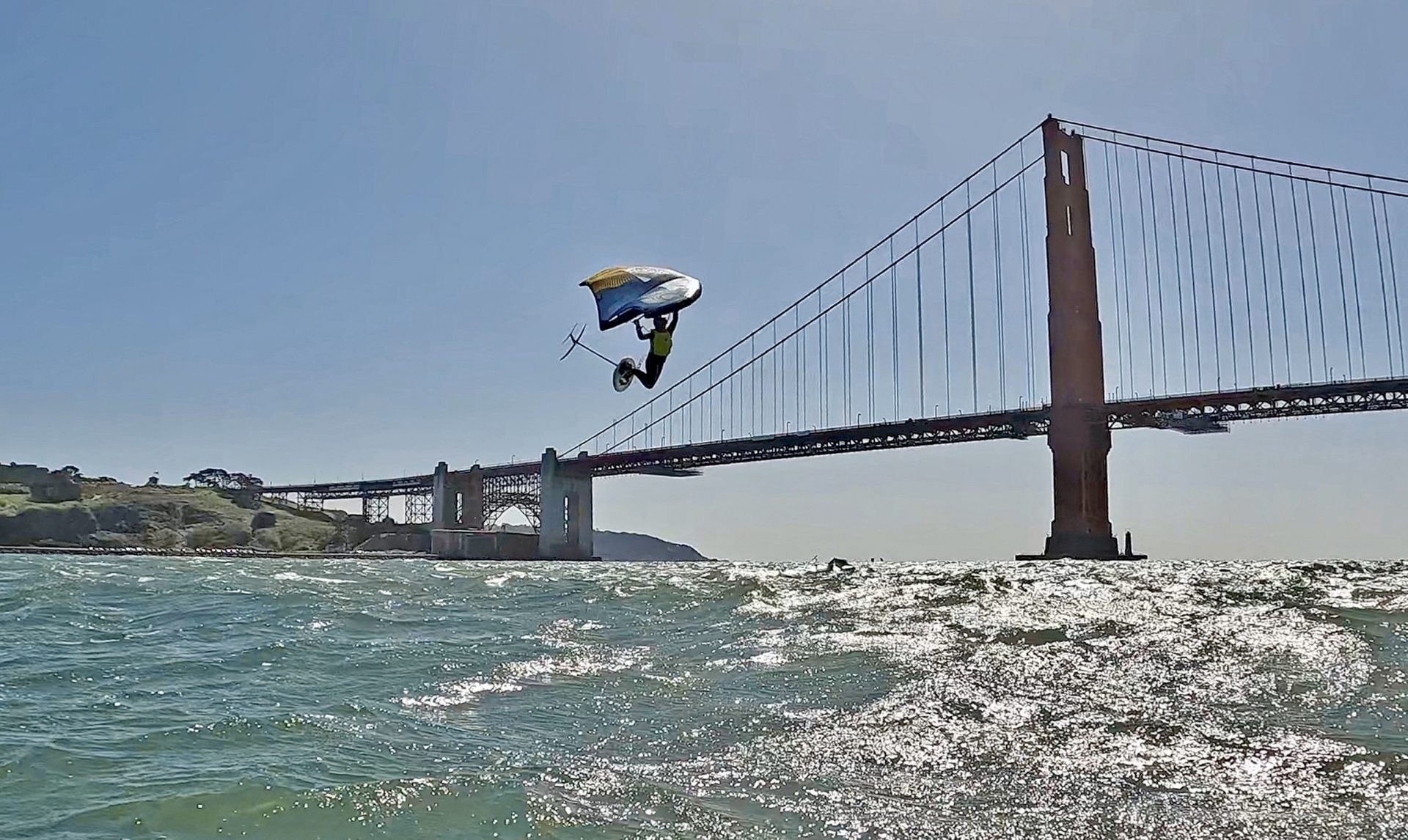
Sailboats sail, and foilers foil, but wingers go out and play. Those flying kites have the ultimate playground from the beach launch at Crissy Field.
“Steady wind, ocean swell, one of the most storied breaks on the planet; it’s just a crazy place to be with all that going on,” says Geoff Headington, an avid winger from Tiburon. “Consequently, you have a bunch of 50-year-old men who can think of nothing else but the sport, their kids, and their god.”
Also in the July issue:
- Letters: My Favorite Spots Inside the Bay; The Price of Sailing; Some Love for Pell Mell; and many more.
- Racing Sheet: California Offshore Race Week; Delta Ditch Run; Belvedere Classic and Great S.F. Schooner Race; Express 27 Nationals; and other racing news.
- Sightings: Hawaii or Bust; Kenichi Horie Does It Again; and more.
- Max Ebb: The Stars Compel
- Changes: Absolute‘s first season in Mexico; Volare‘s luck in finding a great pickup crew; West Coast boats that just completed circumnavigations; plus others, and a tasty aperitif of Cruise Notes.
- Loose Lips: Check out the June Caption Contest(!) winner and top 10 comments.
- The sailboat owners and buyers’ bible, Classy Classifieds.
If you’ve subscribed to Latitude 38, you should receive your July issue in the mail any minute now. If you haven’t subscribed, you’re missing out. But you can pick up your copy from your favorite distributor.
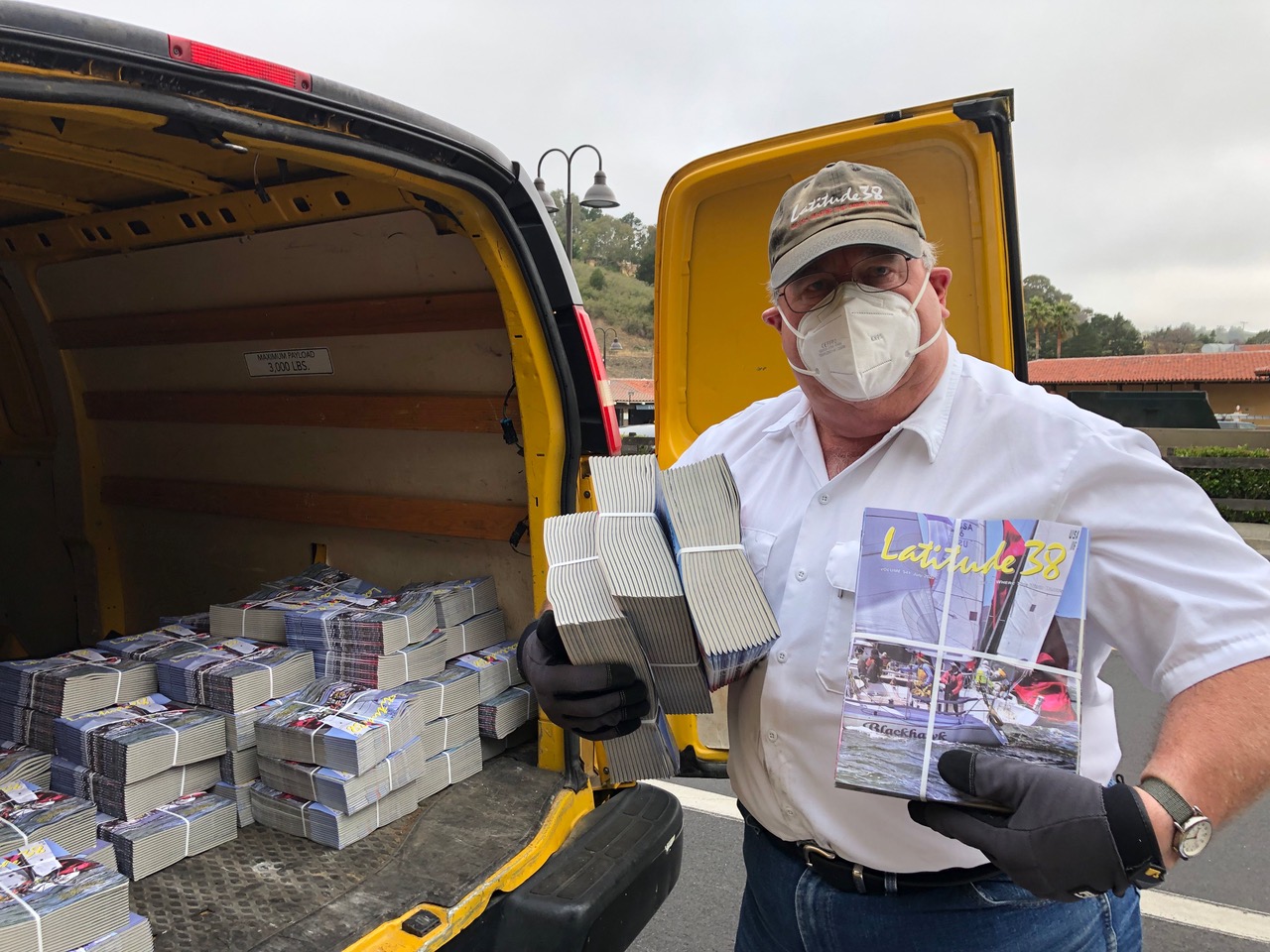
Is There a Better Year To Do the Baja Ha-Ha Than 2022?
Suppose you could both save money and improve your quality of life. The Poobah suggests this is possible — for those who are in a position to do so — by spending a season or two cruising in Mexico.
The difference between the cost of a pleasant standard of living in California and cruising in Mexico can be immense. Can you live comfortably on $1,500 a month, or $2,000 a month for a couple, in California? You can when cruising Mexico. And that would include $125 a month for Starlink, which would allow you to work remotely, Facetime with family and friends, and stream to your heart’s content.
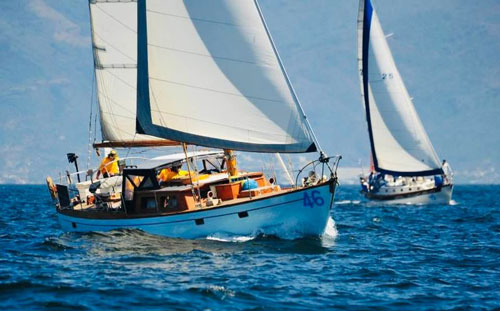
Food is much less expensive in Mexico, no matter whether you’re buying it in a grocery store or dining out. As the Poobah has previously written, his favorite lunch in Mexico, slow-cooked meats that fall off the bone at Paty’s Tacos Quisado in Mita, costs $4. Dinners at the La Cruz Inn, a longtime cruiser favorite in La Cruz, are about $10. And there are plenty of other similar bargain places throughout Mexico. Sure, you can spend more, or even a fortune, on meals, particularly at fancy tourist places, and many cruisers do. But there is no law that says you have to.
Two things that are just as expensive in Mexico as in the States, if not more so: slips at some marinas, and most boat parts. You want to bring the important parts with you from the States.
Fortunately, there are countless places where you can anchor for free in Mexico, no matter if you want to be close to a town or somewhere where you can’t even see a street light. Compare this with the $159 you’d have to pay for one of the moorings in Catalina ($25 service fee plus $67 a night for a minimum of two nights. And you have to leave by 9 a.m.).
Worried about the quality of life? Don’t be.
The winter weather in Mexico is salubrious. Healthy foods — fruits, veggies, and fish — abound, and at much lower prices than in the US.
The other side of health is exercise. There are few better exercises than swimming, and you can get all you want in Mexico. Yes, it’s too cold to swim in the Sea of Cortez from late December until about May, but the mainland is always warm. You can also surf, snorkel, dive, paddle board, play pickle ball, walk, hike, and enjoy many other health-smart activities. Indeed, if anybody wants to amp up their health, there are few places more suitable for doing it than Mexico in the winter.
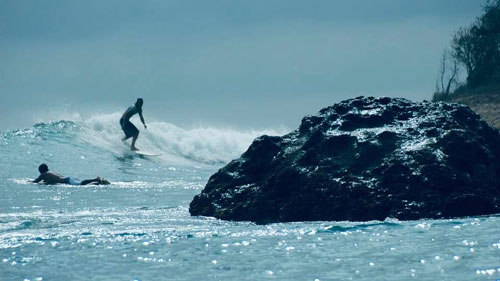
Worried about a social life? Forget that. Cruisers and expats are everywhere from remote anchorages to the cities. Do a Ha-Ha, and you’ll have a dozen new cruising friends by the time you get to Cabo.
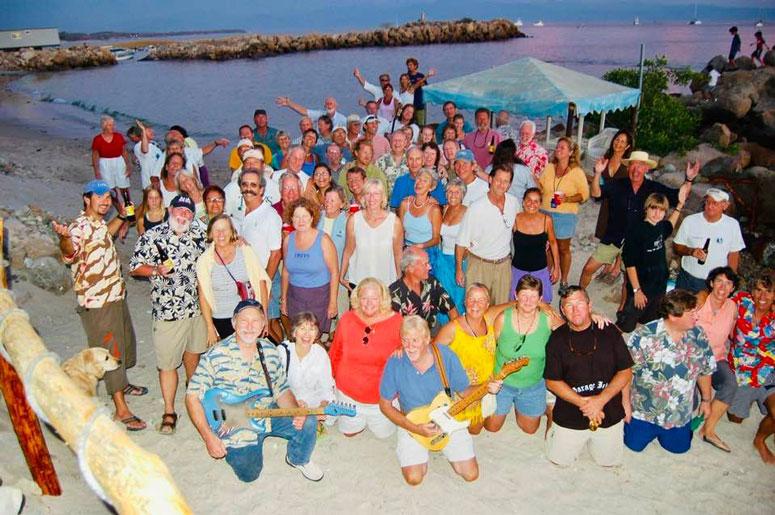
Some people think you have to own a big boat and replicate all the conveniences of home on her to enjoy cruising in Mexico. Baloney.
While some couples have enjoyed cruising Mexico for years on boats as small as a Catalina 27, life on a 32- to 35-footer would be more enjoyable. But you don’t need a boat designed and built for rounding Cape Horn in the winter. Almost any plastic classic built in Southern California in the ’60s, ’70s and ’80s is capable, as long as it’s been maintained. Yeah, it would be nice to have a Hylas 54 or similar, but we’ve cruised Mexico on a Cal 25, an Olson 30, twice, and a Freya 39, and had a great adventure each and every time.
While it might be nice to have everything advertised in cruising magazines, here are some of the things the Poobah has cruised Mexico without: radar, AIS, wind instruments, a windlass, a watermaker, air-con, refrigerator/freezer. Now that we’re older, we consider some of these things near-necessities. Specifically, refrigeration and a power windlass. But in many respects, simplicity rules.
Because of Mexico’s light winds, you do want to make sure you have a reliable engine.
The Poobah realizes that not everybody is in a position to take off cruising to Mexico. Kids in school, onsite job requirements, aging parents needing care, etc. But for those of you for whom it is possible, you might want to give it some serious consideration.
After all, what would you rather be doing come December and January, freezing your buns off in the States, or sailing on warm tropical waters with fresh $3 tuna steaks on the BBQ? Paying $50 per person for dinner, or $7.50 for a seafood pizza at a fancy restaurant at the water’s edge? Spending your evenings watching the depressing news on television, or socializing with countless new friends? The Poobah knows his preference.
You can read about and register for the Ha-Ha at www.baja-haha.com. The event starts on October 31, and the Poobah hopes to see you on the Ha-Ha and in Mexico.
Ownership Opportunities on the Sea of Cortez
Meet the worldly Casa Blake, a new ownership opportunity in the heart of the Costa Palmas Marina Village. Come explore this collection of residences on the Sea of Cortez in Cabo. Register to find out more.
Coast Guard Prepares for Fourth of July Weekend
It’s the Fourth of July weekend, and sailors around the country are getting ready for a good time on the water. In preparation for the surge in boat activity, the USCG has advised that from Saturday through Monday, boaters throughout California can expect increased presence from officers who will be paying particular attention to recreational boating safety.
The increased patrols are in support of Operation Dry Water, a nationwide effort to enforce Boating Under the Influence (BUI) laws.
“While we want you to enjoy your July 4th holiday, we want you to do so safely and responsibly,” said Rear Adm. Andrew Sugimoto, commander, Eleventh Coast Guard District. “We urge boaters to take some simple precautions, such as wearing a life jacket, filing a float plan and limiting alcohol consumption to ensure a safe and memorable experience.”
Coast Guard Auxiliary crews will be performing dockside safety equipment inspections, while the Coast Guard and its local law enforcement partners will be conducting boating safety boardings.

Operation Dry Water is aimed at raising awareness of the dangers of operating under the influence to help decrease the number of recreational boating accidents and deaths. It is illegal to operate a boat while under the influence of alcohol or drugs in every state. Penalties for violating BUI laws include large fines, suspension or revocation of boat operator privileges, and jail terms.
California has the fourth-largest number of recreational boats in the country and has the second-highest number of boating-related accidents and deaths, according to the Coast Guard’s 2021 statistics.
Nationwide, 658 people died and 2,641 were injured in boating and paddling accidents in 2021. Approximately 74 percent drowned, and more than 73 percent of those people were not wearing a life jacket.
The Coast Guard offers the following tips for a safe time on the water:
- Wear a life jacket. Make sure that there is at least one properly-fitted life jacket for every passenger and that the life jackets are readily accessible if not worn. All children under 13 must wear a life jacket at all times.
- Don’t drink and boat. Aside from wearing a life jacket, not drinking and boating is one of the easiest ways to prevent accidental deaths on the water. People operating vessels under the influence of alcohol, drugs or impairing medication pose a serious threat to you and anyone else aboard.
- File a float plan. Before you get underway, leave information about your trip with a family member or a friend on shore. Include information that would help rescuers in case of an emergency — how many people on board, where you are going, how long you will be out, and a description of your boat.
- Inspect your boat and equipment. Make sure your navigation equipment — particularly your navigational lights, if you plan to be out at night — is in good working order. Carry fire extinguishers, a first aid kit, charts of the area and an anchor. Get a free safety inspection from the Coast Guard Auxiliary to make sure you have all the gear and safety equipment required by your state and federal laws.
- Equip your boat with an Emergency Position Indicating Radio Beacon (EPIRB). An EPIRB is a safety device that automatically transmits an emergency signal when it is placed or floating in the upright position. The signal allows the Coast Guard and other agencies to pinpoint your location.
- Carry a portable weatherproof marine band radio. Cell phones may go out of range or lose battery power when needed most. The Coast Guard, other agencies, and other boaters monitor marine band radios, increasing the number of people who can respond if you’re in trouble.
- Take a boating safety course. Approximately 80 percent of boating deaths occur on boats where the operator had no formal boating safety instruction. The Coast Guard recommends that all boaters take a safety class and a refresher every five years. The Coast Guard Auxiliary offers low-cost boating safety courses.
- Check the weather. Check daily weather reports, or listen to a marine band radio, for sudden changes in weather conditions.
- Download the Coast Guard Boating Safety app. You can file a float plan, request assistance, request a vessel safety check, and report pollution and hazards to navigation.
The crew at Latitude 38 will be on the water in various parts of the Bay, so if you see someone taking a photo of you, give a big smile and a wave. Because, who knows? You could make the cover of the next issue.
Happy Fourth of July! Have a safe and fun weekend everyone!
US Sailing Descends Upon San Diego
West Marine US Open Sailing Series
The San Diego edition of the West Marine US Open Sailing Series wrapped on Sunday, June 19, after three days of beautiful racing in the Pacific, with 8-10 knots of breeze and 3- to 5-ft sea swell.
The first stop on the West Coast swing, the San Diego event included the ILCA 4, ILCA 6, ILCA 7, 470, 29er, Snipe and Finn classes. The event served as the 29er National Championship and the US Singlehanded Championship for the O’Day and Hanley trophies.
29er Skiff
US Sailing’s representatives for the Youth Worlds had a banner weekend in the 13-boat 29er fleet. Brothers Ian and Noah Nyenhuis, who will sail in the Men’s 29er, took first place. Sammie Gardner and Alice Schmid, who will represent the US in the Women’s 29er, took second. Both teams sail for San Diego Yacht Club.
“It’s nice to have the whole 29er fleet in our hometown,” said Sammie Gardner and Alice Schmid. “We don’t usually race against fleets this big, so that experience has been super-beneficial before Youth Worlds.”
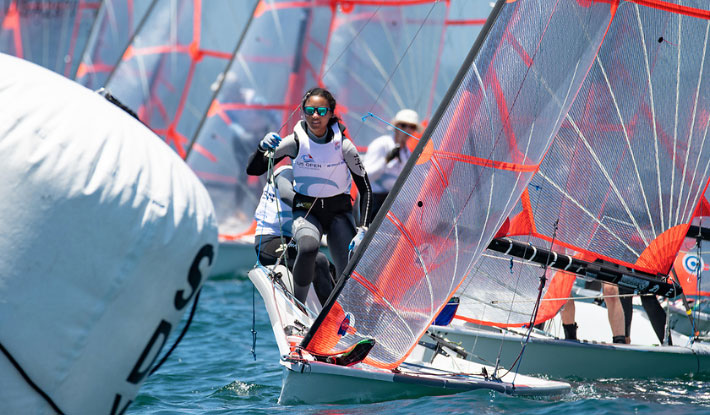
ILCA Dinghy Classes
In the ILCA 7 (Laser standard rig), San Francisco YC’s Nick Sessions took second behind Leo Boucher. In the massive 45-boat ILCA 6 fleet, the top West Coast finisher was California YC’s Katharine Doble in third. Robby Meek won that championship. Only three sailors competed in the smallest rig of the Laser range, the ILCA 4. Max Brameld of SFYC came in second after France’s Gilda Dondona.
Finn and 470
Southern Californians dominated the dozen Finns, with Erik Lidecis, Anatolii Nosar and Rob Coutts going 1-2-3. Sailing for St. Francis YC, Kyra Phelan and Dylan Murphy dominated the tiny three-boat 470 class, winning all 10 races.
The US Open Sailing Series will continue in Long Beach on July 15-17, and on San Francisco Bay on August 12-14.
US Youth Championships
San Diego followed up the next weekend by hosting the US Sailing Youth Championships on June 24-26. More than 100 sailors competed across four classes in the regatta, open to youth 19 and younger.
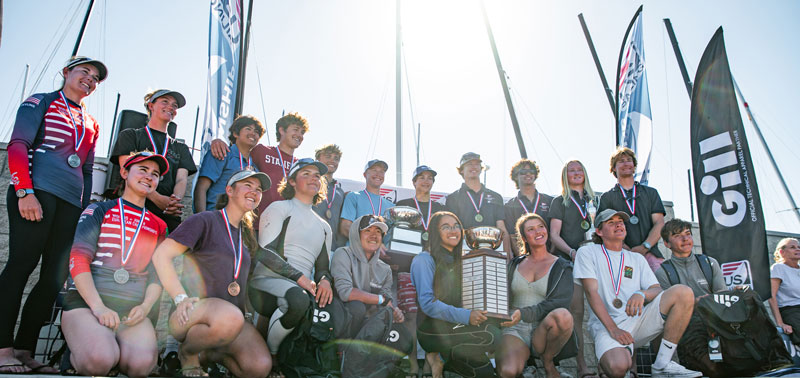
29er Skiff
Tyler and Andrew Lamm took first over US Youth Worlds representatives Ian and Noah Nyenhuis for the Manton D. Scott Trophy. Seven different teams took at least one race win in the 18-boat class.
i420
Robert Ulmer and Henry Allgeier finished in first, one point in front of second-place finishers Sophia Devling and Carmen Berg. Kyra Phelan, this time sailing with Brooke Schmelz, took third.
ILCA Dinghy
US Youth Worlds Women’s ILCA 6 representative Katharine Doble secured the win with 12 points after eight races, winning the Robert and Anne Connor Trophy. Doble is the second-ever female to win the Conner Trophy in the ILCA 6, following Erika Reineke in 2011.
Dave M. Perry Sportsmanship Award
One Sportsmanship Award recipient was chosen in each class. Sailors were nominated by their fellow competitors, then chosen by the event coaches. Winners displayed acts of sportsmanship, kindness, and the Corinthian spirit throughout the event. Congratulations to:
- Sage Andrews & Noelani Velasco, 29er
- Jack Baldwin, ILCA 7
- Efe Derman, ILCA 6
- Christopher Tang & AJ McKeon, i420
Youth World Championships
More than 450 young sailors from 69 countries plan to compete in the Allianz Youth World Sailing Championships. The regatta will take place off the coast of Scheveningen in The Hague, The Netherlands, on July 8-15. Representing the US are:
- Male Windsurfer – Youth iQFOiL: Makani Andrews (Kaneohe, HI)
- Female Windsurfer – Youth iQFOiL: Danicka Sailer (Honolulu, HI)
- Male One Person Dinghy – ILCA 6: Peter Barnard (Chicago, IL)
- Female One Person Dinghy: Katharine Doble (Pacific Palisades, CA)
- Male Skiff – 29er: Ian & Noah Nyenhuis (San Diego, CA)
- Female Skiff – 29er: Sammie Gardner & Alice Schmid (San Diego, CA)
- Male/Mixed Two Person Dinghy – i420: Freddie Parkin (Riverside, CT) & Asher Beck (Cos Cob, CT)
- Female Two Person Dinghy – i420: Samara Walshe (New York, NY) & Lillie Foster (Darien, CT)
- Mixed Two Person Multihull – Nacra 15: Dorothy Mendelblatt (St. Petersburg, FL) & Ian Iles-Lee (Tampa, FL)
- Male Kiteboarding – Formula Kite: Ryan Satterberg (Santa Barbara, CA)
Good luck to them all!
Quality Yachts With Premium Service From Swiftsure Yachts
Swiftsure Yachts offers exceptional service, quality brokerage boats and new yachts for world cruising. Visit our website swiftsureyachts.com.


